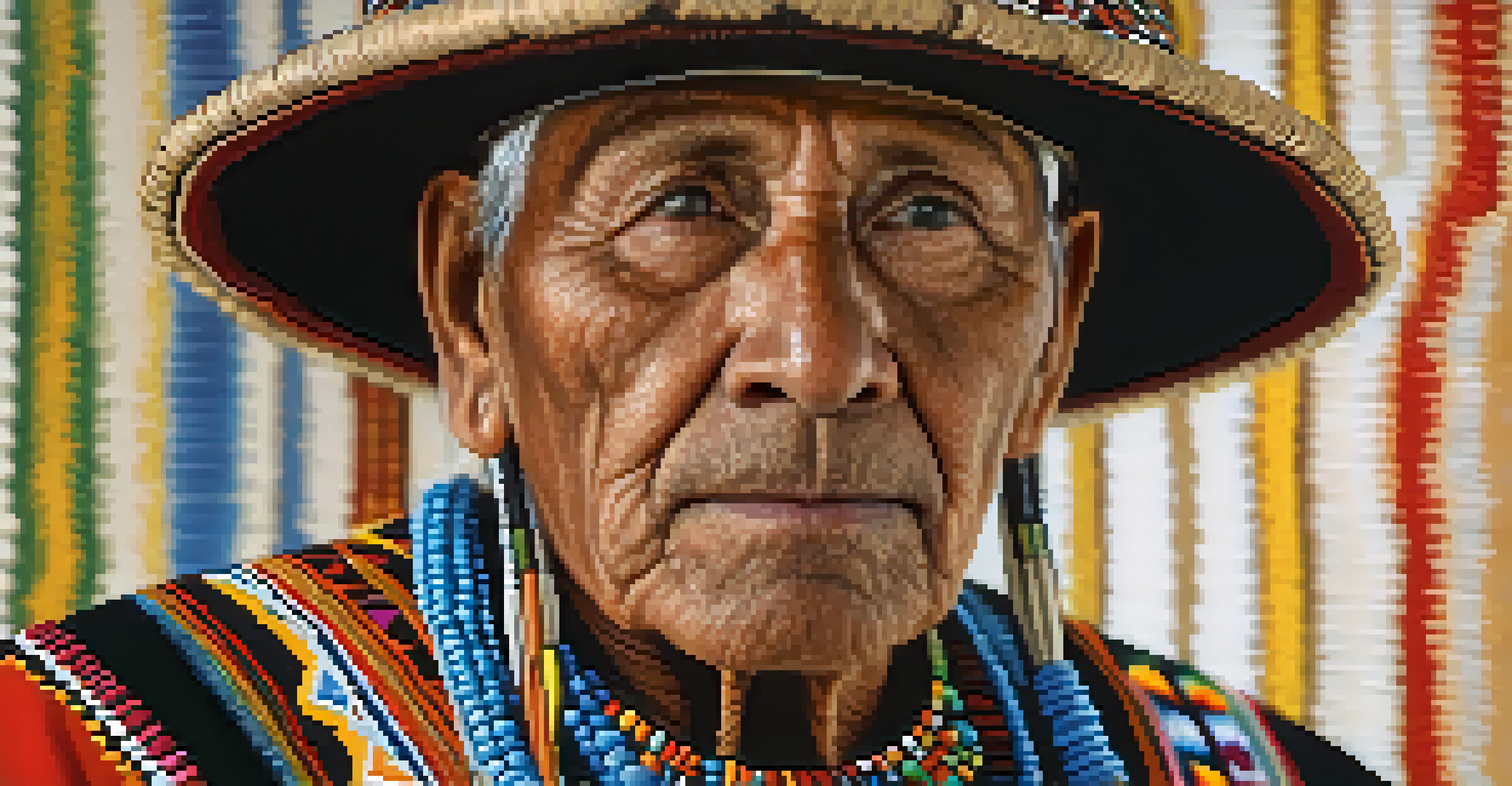The Seminole Wars: Conflict and Resistance in Florida

Understanding the Seminole People and Their Background
The Seminole people, originally from various tribes, migrated to Florida in the 18th century. They formed a unique culture, blending influences from Native American, African, and European communities. This diverse heritage shaped their identity as they settled in the swamps and forests of Florida, creating a resilient and resourceful society.
The history of the Seminole people is a story of resistance and resilience, showcasing the enduring spirit of a community fighting for its identity.
As outsiders began to encroach on their lands, the Seminoles faced numerous challenges. They resisted assimilation and the pressures of European-American settlers who sought to exploit Florida's resources. This mounting tension would ultimately lead to a series of conflicts known as the Seminole Wars.
Understanding the Seminole people’s background is crucial to grasping the complexities of these wars. Their strong sense of community and connection to the land played a significant role in their resistance against external threats.
The First Seminole War: Roots of Conflict
The First Seminole War, which began in 1817, was primarily triggered by border disputes. The U.S. sought to assert control over Florida, leading to confrontations with the Seminoles who were protecting their territory. The war highlighted the escalating tensions between the two groups, driven by differing perceptions of land ownership and sovereignty.

Andrew Jackson, a military leader at the time, launched an aggressive campaign against the Seminoles. His actions were controversial, as he invaded Florida without direct authorization, showcasing the lengths to which the U.S. would go to secure its interests. This conflict was marked by guerrilla warfare tactics employed by the Seminoles, showcasing their strategic resilience.
Seminole Wars Defined Tribal Identity
The Seminole Wars were pivotal in shaping the Seminole people's identity, highlighting their resilience and struggle for sovereignty against U.S. expansion.
The First Seminole War ended in 1818 with a treaty that ceded parts of Florida to the U.S. However, the underlying issues remained unresolved, setting the stage for further conflict. The war was just the beginning of a prolonged struggle for the Seminoles.
The Second Seminole War: A Struggle for Survival
The Second Seminole War, lasting from 1835 to 1842, was one of the most intense conflicts between the U.S. government and the Seminole tribe. The primary cause was the U.S. government's push to remove the Seminoles from their lands, driven by the desire for expansion and economic gain. This time, the stakes were higher, as many Seminoles were unwilling to leave their ancestral home.
The struggles of the Seminole Wars remind us that the fight for rights and recognition is ongoing, echoing in the voices of indigenous communities today.
Led by notable figures like Osceola, the Seminoles mounted a fierce resistance against U.S. troops. Their tactics included surprise attacks and using the challenging Florida terrain to their advantage. This conflict became a symbol of Native American resistance, drawing attention to the injustices of forced removal policies.
Despite their tenacity, the Second Seminole War ended with significant losses for the Seminoles. Many were forcibly relocated, while others sought refuge in the Everglades, where they continued to fight for their rights. This war solidified their identity as a resilient people, determined to protect their way of life.
The Third Seminole War: A Final Stand
The Third Seminole War, igniting in 1855, was less extensive but equally pivotal. Sparked by ongoing tensions over land encroachments, this conflict saw the U.S. military attempting to remove the remaining Seminoles from Florida. While not as large in scale as its predecessors, it was marked by skirmishes and a continued struggle for the Seminoles' right to exist on their land.
During this war, the U.S. government employed a strategy of attrition, hoping to exhaust the Seminoles. However, the Seminoles remained committed to their fight, often using guerrilla tactics to disrupt U.S. forces. This resilience demonstrated their unwavering spirit amid overwhelming odds.
Cultural Impact of the Seminole Wars
The conflicts transformed Florida's landscape and demographics, leading to the disruption of Seminole life while also fostering a strong sense of cultural identity.
The Third Seminole War ultimately ended in 1858, with the U.S. recognizing the impracticality of completely removing the Seminoles. A small number remained in Florida, and their legacy of resistance became a poignant part of American history. This conflict marked the end of a significant chapter in the Seminole struggle.
Impact of the Seminole Wars on Florida's Landscape
The Seminole Wars had profound effects on Florida's landscape, both physically and culturally. The conflicts led to widespread destruction of land, homes, and resources, altering the environment in significant ways. The once-thriving Seminole communities were disrupted, and their traditional ways of life faced unprecedented challenges.
Additionally, the wars opened up Florida for further settlement by European Americans, leading to a rapid influx of new populations. This shift changed the demographic makeup of the region and initiated new economic developments, often at the expense of the Seminole people. The scars of these conflicts are still visible in Florida's history and culture today.
Despite the devastation, the Seminole Wars also fostered a sense of identity and resilience among the Seminoles. Their struggles became a part of Florida's narrative, reminding us of the complexities of land ownership, survival, and cultural preservation.
Legacy of the Seminole Wars in American History
The legacy of the Seminole Wars extends far beyond the borders of Florida. They serve as a stark reminder of the broader struggles faced by Native American tribes during the expansion of the United States. The resistance displayed by the Seminoles has become a symbol of courage and tenacity, inspiring future generations in their own fights for rights and recognition.
Historically, the wars highlight the tensions between indigenous populations and expanding nations, a theme that resonates in many contemporary discussions about land and sovereignty. The Seminoles' fight for their rights and identity has paved the way for modern tribal sovereignty movements across the country.
Modern Seminole Tribe Thrives Today
The Seminole Tribe of Florida has successfully preserved its culture and heritage while thriving economically through various enterprises and community initiatives.
Today, the Seminole Wars are studied not only for their historical significance but also for the lessons they offer about resilience and the importance of cultural heritage. The ongoing efforts of the Seminole Tribe of Florida to preserve their history and traditions reflect their enduring spirit.
Modern Seminole Tribe: Preservation and Progress
In modern times, the Seminole Tribe of Florida has made significant strides in preserving their culture and identity. With a focus on education, economic development, and community well-being, they have turned the legacy of the wars into a foundation for future growth. Their resilience is evident in their commitment to sharing their history and traditions with both tribe members and the public.
The tribe operates successful enterprises, including casinos and tourism initiatives, which have helped improve the quality of life for their members. These ventures not only provide economic opportunities but also serve as platforms for cultural expression and outreach. The Seminoles have become a vital part of Florida's economy, showcasing how indigenous communities can thrive in contemporary society.

Through their efforts, the Seminole Tribe continues to honor their ancestors while forging a path forward. Their story is one of survival, adaptation, and strength, reminding us that history is not merely a series of events but a living narrative that shapes our present and future.